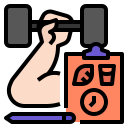Beginner-Friendly Home Workout Plans: Start Strong, Stay Consistent
Chosen theme: Beginner-Friendly Home Workout Plans. Welcome to your supportive starting line—no fancy gear, no intimidation, just simple steps that fit your life. Read on, try a session today, and subscribe to stay motivated.

Set Up for Success at Home
Choose a bright spot the size of a yoga mat, remove clutter, and keep essentials nearby—water, towel, and a timer. A dedicated corner signals your brain that movement is normal, doable, and welcome daily.


Set Up for Success at Home
Begin with gentle neck rolls, shoulder circles, and ankle rotations, then add marching in place. Warm muscles protect joints, improve range of motion, and boost confidence before your first beginner-friendly home workout plan truly begins.
Week 1 Plan: Simple, Safe, Effective
The Five-Move Foundation Circuit
Try three rounds of bodyweight squats, wall push-ups, glute bridges, bird-dog, and marching in place. Perform eight to ten slow reps each. This beginner-friendly home workout plan teaches form, balance, and patience from day one.

Low-Impact Cardio You Can Actually Enjoy
01
March in place for thirty seconds, side step for thirty, then rest for twenty. Repeat four to six times. This beginner-friendly home workout plan boosts heart health gently while teaching pacing you can sustain all week.
02
Pick a favorite song and move your feet lightly, adding arm swings without jumping. Keep it conversational pace. Comment with your go-to track and we’ll feature a community playlist for beginner-friendly home workout plans next week.
03
Step forward, reach overhead, step back, then switch sides. Keep your core braced and shoulders relaxed. This smooth pattern raises your heart rate while reinforcing posture, perfect for maintaining momentum on beginner days.
Strength Training Using Everyday Items
Use two filled bottles for curls, overhead presses, and lateral raises. Move slowly, stopping before discomfort. This approach keeps your beginner-friendly home workout plan accessible, budget-friendly, and surprisingly effective for building confidence and foundational strength.
Strength Training Using Everyday Items
Load a backpack with books, hug it close, and squat to a chair. Pause briefly, then stand tall. Comment how many controlled reps felt good. Your note might help another beginner find their starting point confidently.


Mobility and Flexibility for Beginners
Spend five minutes with cat-cow, thoracic rotations, and hip circles. Breathe with each movement, noticing tight areas. This loop greases the groove so your beginner-friendly home workout plan starts smoother and ends with less soreness overall.
Mobility and Flexibility for Beginners
After a warm shower, hold calf, quad, and chest stretches for twenty to thirty seconds each. Dim lights, slow breathing. Share your favorite wind-down ritual to help others anchor their beginner routines with calm consistency.
Mobility and Flexibility for Beginners
Inhale through the nose four counts, exhale six. Pair each stretch with breath length rather than speed. This simple anchor improves focus, reduces tension, and makes beginner-friendly home workout plans feel kinder and more mindful nightly.
Stay Motivated, Track Progress, Stay Accountable
Attach workouts to existing habits: after coffee, before lunch, or right after brushing teeth. Habit stacking removes decision fatigue, making your beginner-friendly home workout plan automatic rather than a willpower battle every single day.

Progressive Overload at a Gentle Pace
Increase only one variable: reps, sets, or time. Avoid bumping all three. This measured approach keeps your beginner-friendly home workout plan advancing without burnout. Share your next gentle progression so the community can learn alongside you.
Form Before Reps Every Time
Stop each set one rep before your form breaks. Record how good form feels—steady knees, stacked ribs, relaxed neck. These cues become anchors, guiding safer, stronger workouts that compound into durable everyday strength over months.
Listen to Signals, Not Ego
Differentiate discomfort from pain. Modify to wall push-ups, reduce range, or rest if something pinches. The bravest beginner recalibrates early. Comment how you modified today so others feel permission to pivot without guilt or fear.
